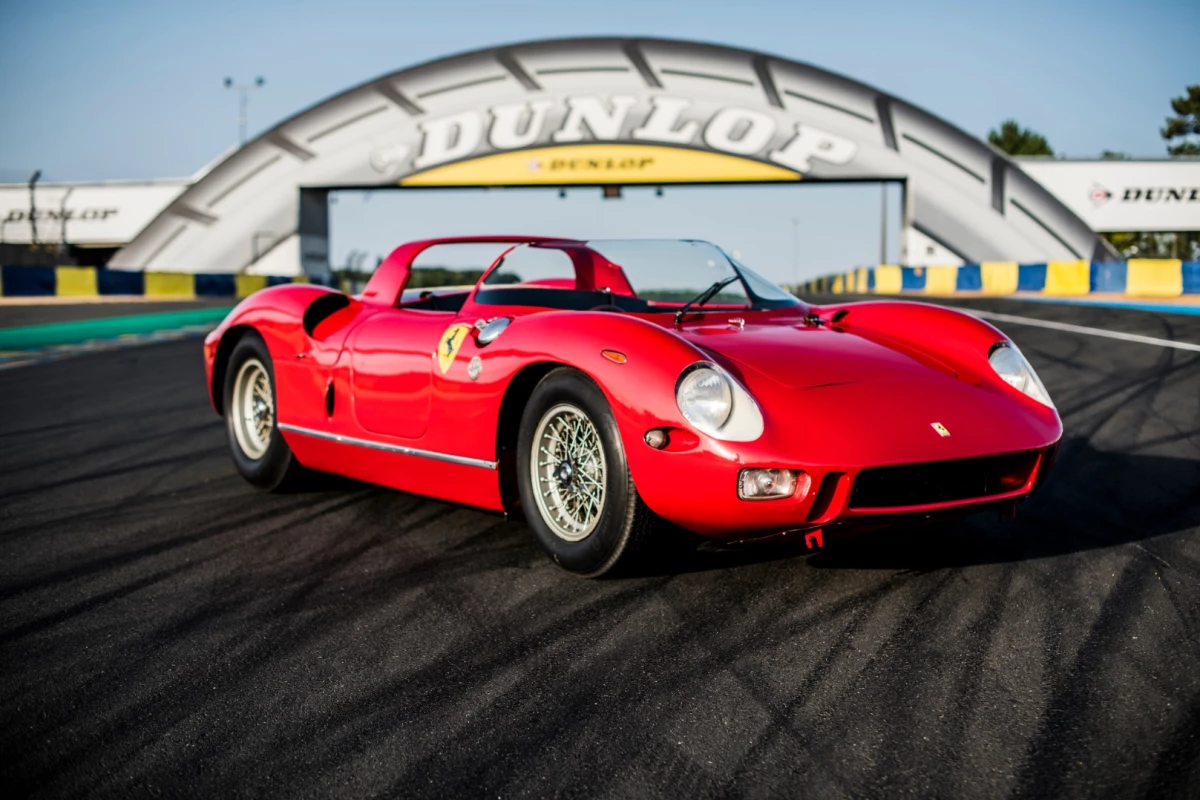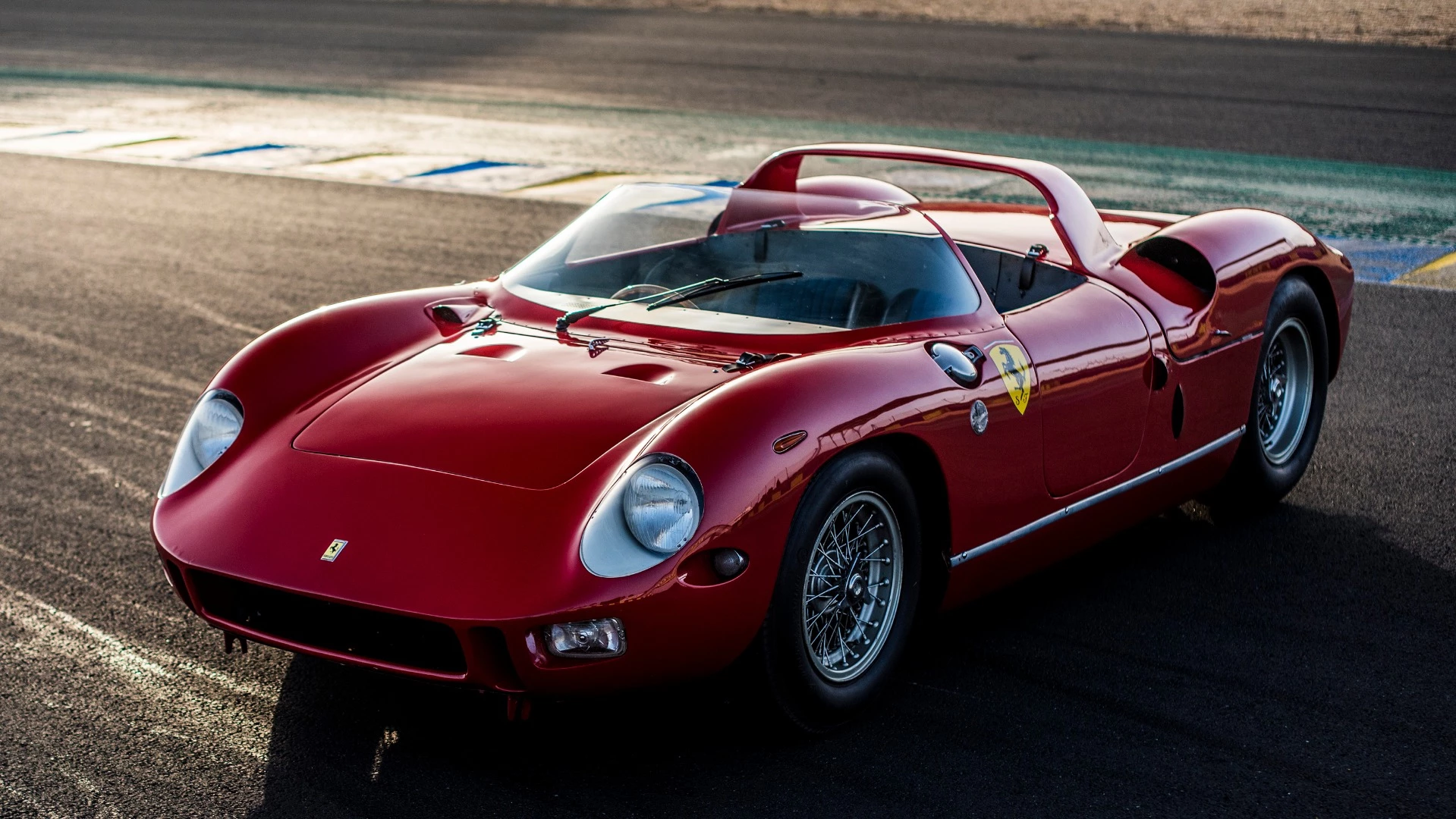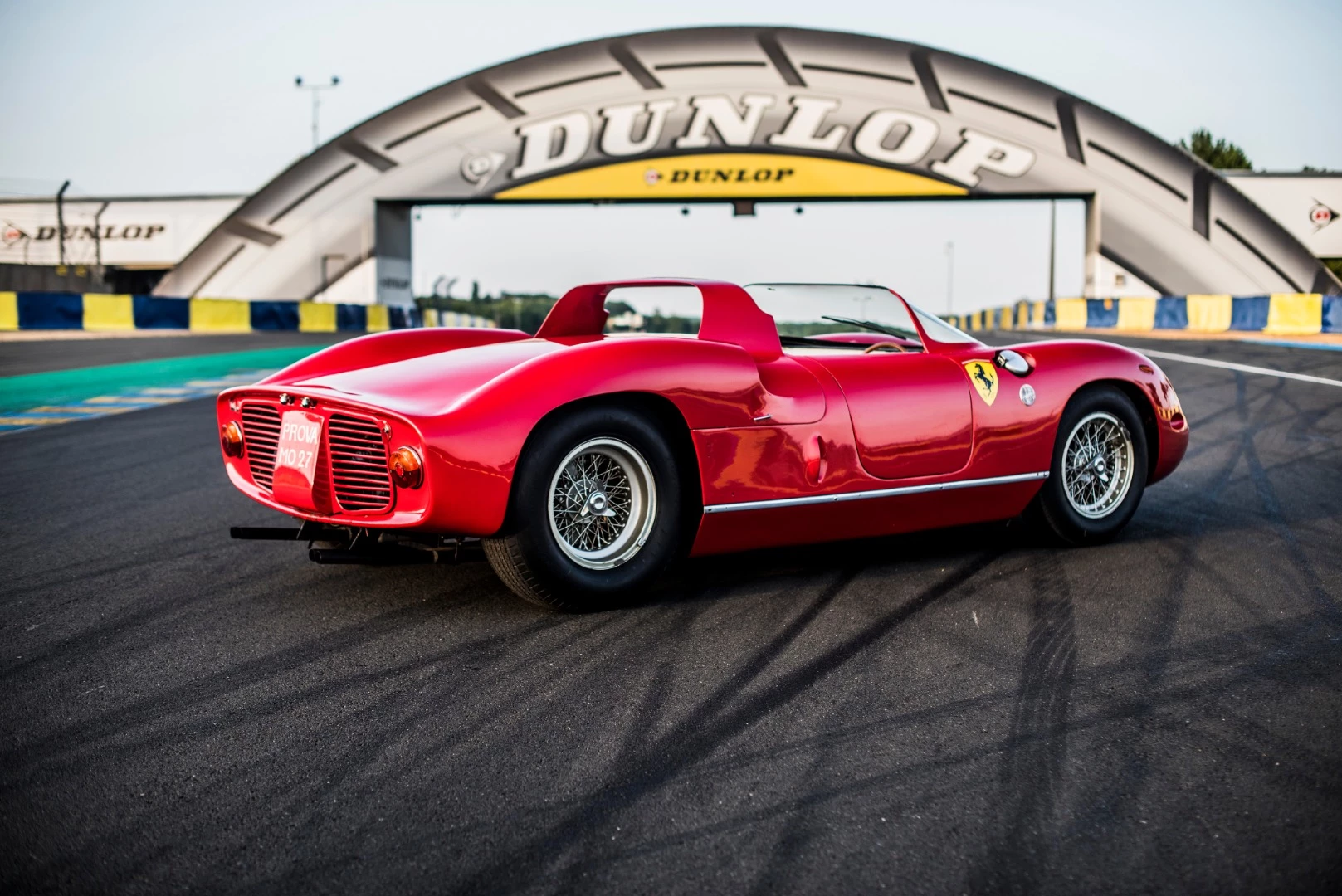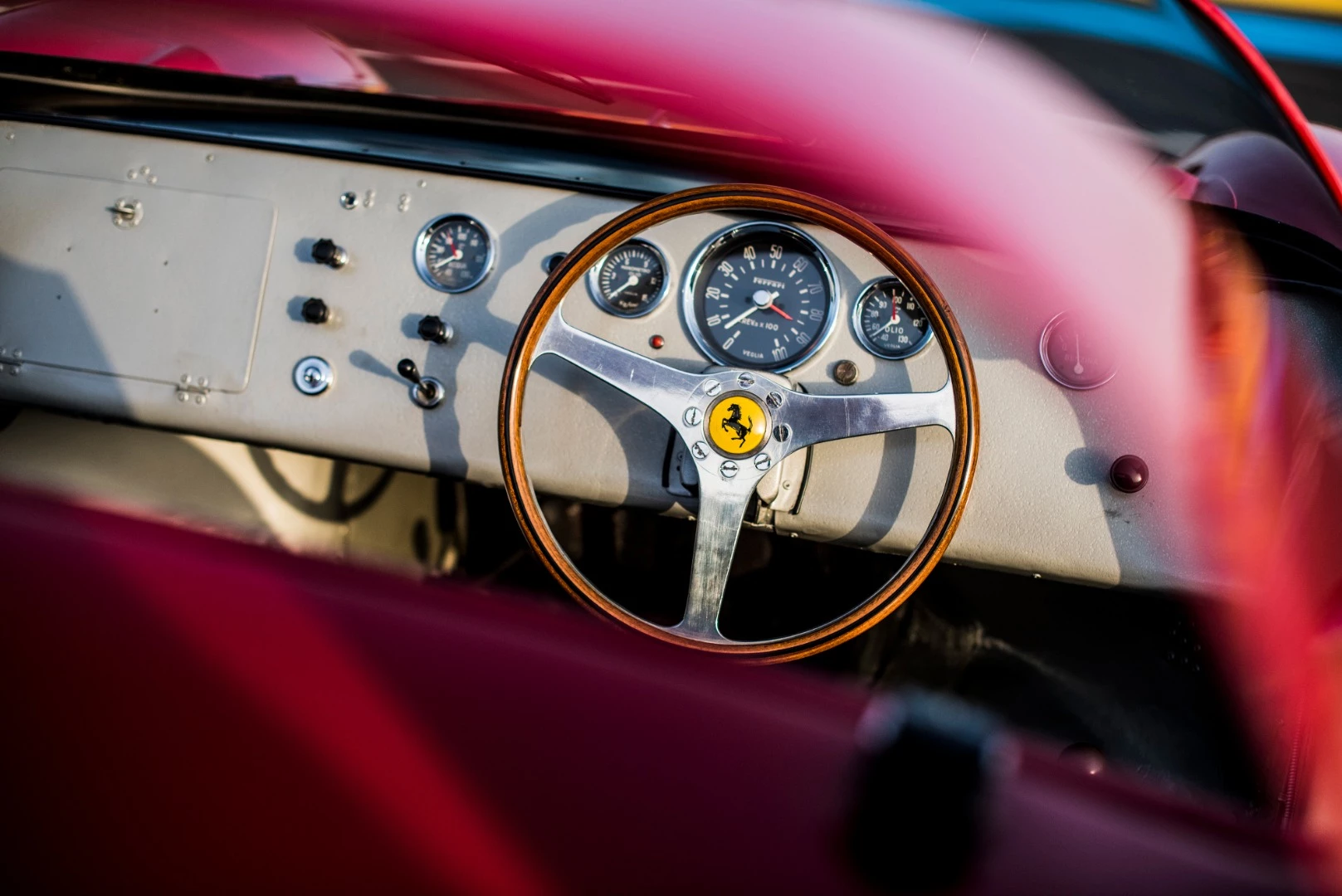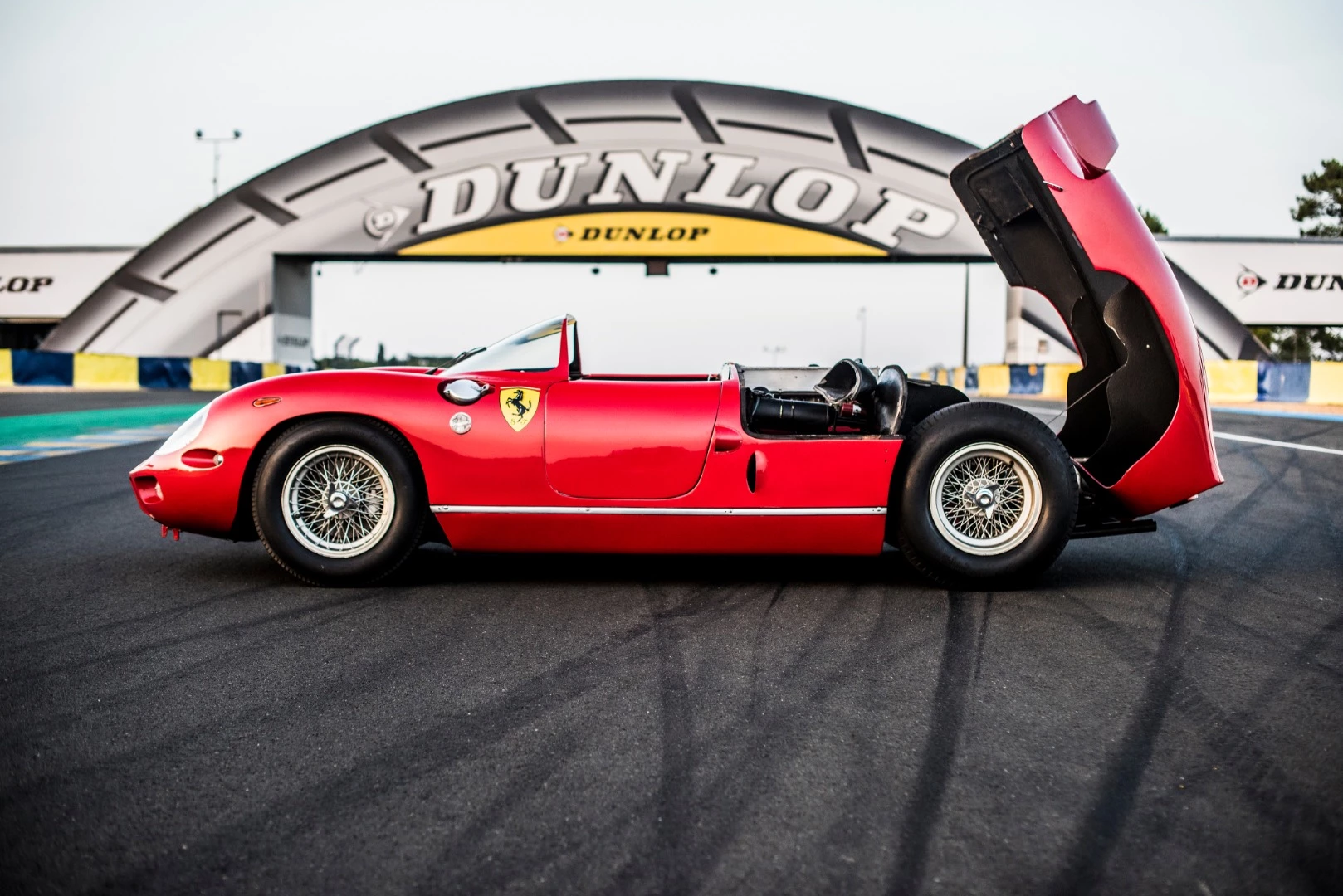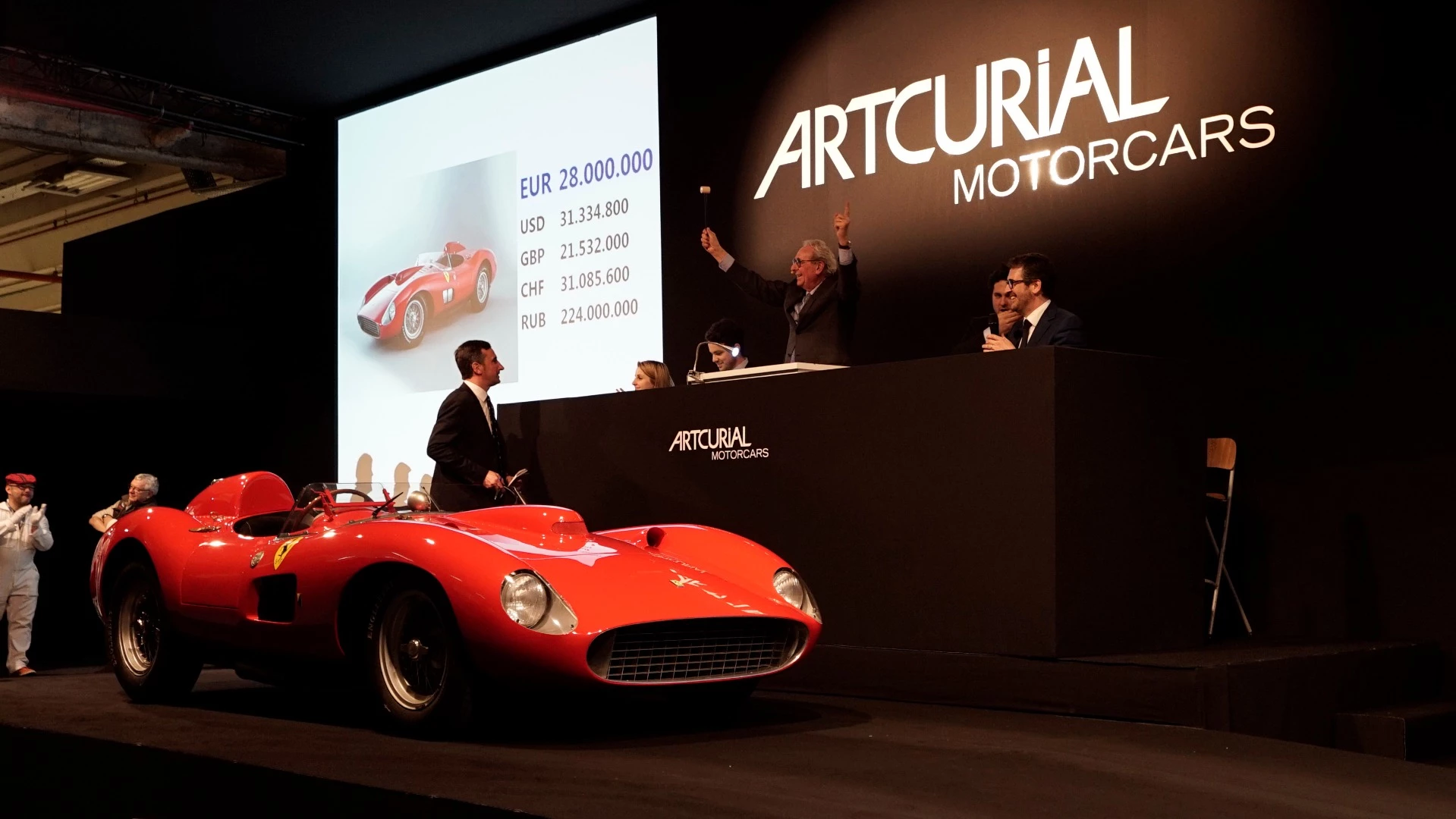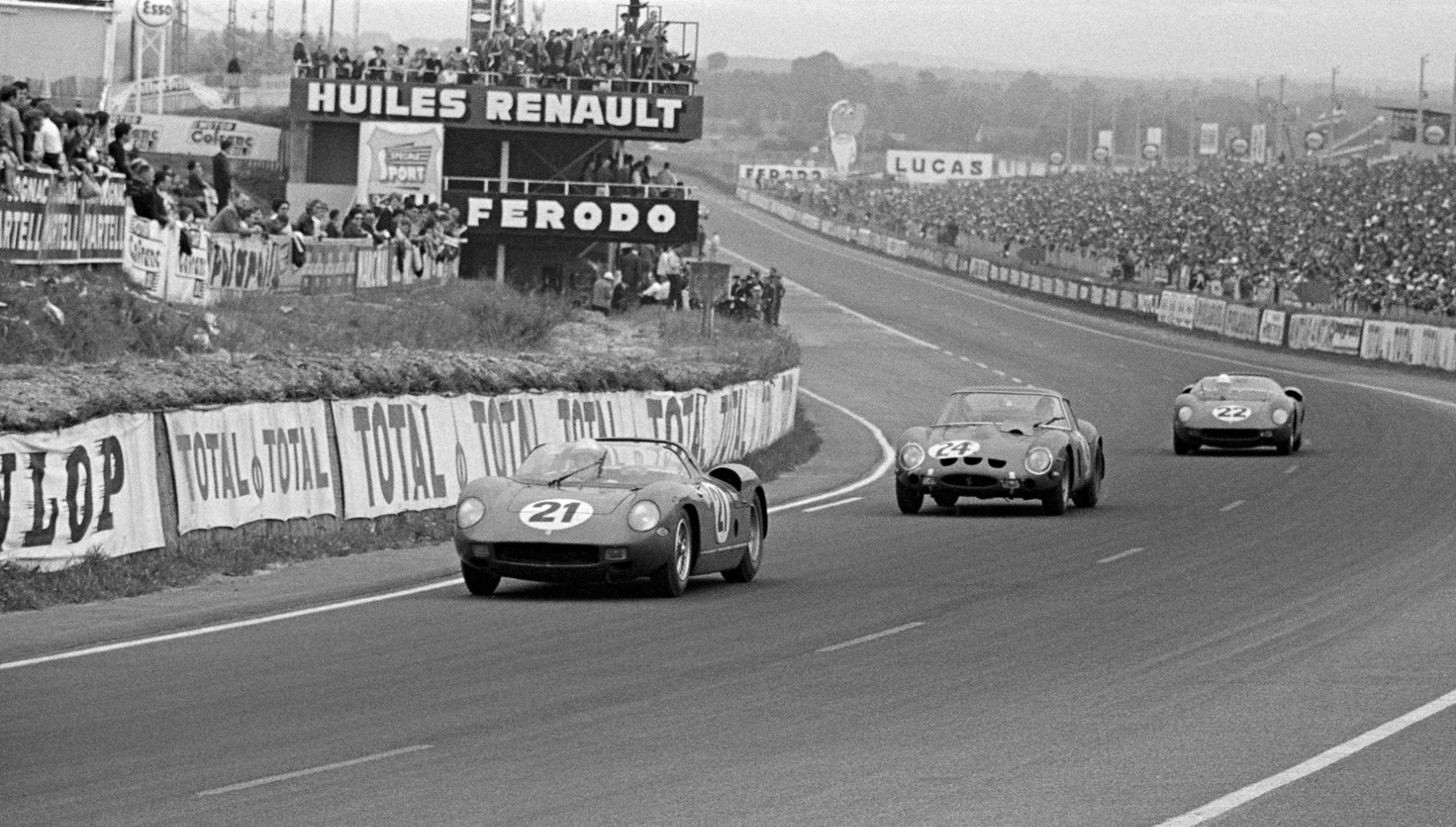One of the most significant cars in automotive history will most likely sell at Monterey this week, and it isn't the Ferrari 250 GTO that will take much of the public focus. We won't even see this car cross the auction block, and we may never know the price it sells for, because the 1963 Ferrari 275 P in question is being passed through RM-Sotheby's recently inaugurated Private Sales Department, which has been set up to provide the discrete brokerage of rare motor cars.
Indeed, we don't know the asking price, but it will be of similar magnitude to the much celebrated Ferrari 250 GTO, which will be the focus of the Monterey auctions, perhaps even more ... because this car is as rare and desirable as they come.
This Ferrari 275 P is the last Scuderia Ferrari car to win the 24 Hours of Le Mans, and it won twice, in 1963 and 1964, as well as winning the 1964 12 Hours of Sebring.

In 1963, the tiny 775-kg (1,709-lb) (dry) mid-engined Ferrari 250P driven by Ludovico Scarfiottiand Lorenzo Bandini, won the world's most important race by more than 200 km (125 mi) (16 laps), setting a new record distance for the race, becoming the first car to win the race without the traditional front-engined layout, and it was Scuderia Ferrari's fourth consecutive victory in the race.
The 1963 race was also the first all-Italian (car and drivers) victory, further sweetened by Ferraris filling the first six places outright, and the first three places in the 3.0 Liter GT category, christening the new 250 GTO with a 1-2 class win.

In 1964, with a new 3.3 Liter V12 engine and redesignated as a 275P, it was driven by a new pairing of Sicilian Nino Vaccarella and Frenchman Jean Guichet to again set a distance record for the 24 hour race, covering 4,695.3 km (2,917.5 mi) and averaging 196.6 km/h (122.2 mph) to lead home a Ferrari 1-2-3 outright as Ferrari 250 GTOs also scored a 1-2-3 in the 3.0 liter GT class.
Though the North American Racing Team Ferrari 275 LM would win again for Ferrari in 1965, the 1964 victory was the very last time that Scuderia Ferrari would stand atop the podium at Le Mans.
One of just four double Le Mans winners in history

Any car that wins the world's most important race, the 24 Hours of Le Mans, is a collectible bound for a museum or the most elite of collections, being coveted by its owner, as victory in the 24 Heures du Mans is the ultimate provenance. It is the world's oldest sports car endurance race, and the most influential in terms of brand building for the marques that have contested it successfully since it began in 1923.
In that history, just four cars have won the race twice: the Bentley Speed Six (Chassis MT3464) did it in 1929 and 1930; Ford GT40 (chassis #1075) did it in 1968 and 1969; the Porsche 956 of Team Joest (chassis #117) did it in in 1984 and 1985; and this car (chassis #0816) did it as a 250P in 1963 and with a new motor as a 275P in 1964.
Provenance of this magnitude is extremely rare, and as you can clearly see, this is the only Ferrari to win the most important race in the world twice.
The Law of Unintended Consequences

This Ferrari 275P is the same car that was set to headline Artcurial's official Retromobile auction in Paris in February this year (2018) but was withdrawn a fortnight prior to auction due to disputes regarding the estate of Pierre Bardinon, the owner of the most fabulous and extensive Ferrari Collection ever assembled.
In Ferrari history, few Tifosi stand out as devotees of the Ferrari brand quite as prominently as Pierre Bardinon. Bardinon was the fifth generation of the Bardinon family to head the French Chapal fashion empire (creators of the "bomber jacket") founded in 1832, and he loved cars in general and Ferraris in particular.
Initially curating a collection including several marques, he eventually focussed solely on Ferraris, and beginning in the 1950s amassed an unrivalled collection of 70 Ferrari racing and sports cars in a period when old race cars were not considered particularly valuable.
Bardinon might well have been a razor sharp businessman, but there's little doubt that it was his love of his Ferraris that drove the building of his collection. It wasn't some far-sighted investment strategy, but a wish to drive those cars and that desire was so strong that he built his own racetrack on the family estate at Mas Du Clos, along with workshops and a team of people to keep them in fine fettle so he could punt them around his own racetrack. That's the estate and racetrack below, and one of the few pictures of Bardinon in his estate with his cars and wearing the bomber jacket that facilitated his passion.

When Enzo Ferrari was once asked why Ferrari did not have a museum (it now has a wonderful museum but did not at the time), he said, "Bardinon has done it for me," because Bardinon had not just gathered superb examples of each significant model, but had sought out the specific cars that had performed Ferrari's greatest feats. He famously owned four of the cars responsible for Scuderia Ferrari's eight Le Mans wins.
As Ferrari's star continued to rise through the 1960s and onwards for another 60 years, Ferraris once worth thousands become worth tens, then hundreds of thousands, then millions, and now tens of millions.
Ferraris now make up approximately half of the most valuable cars sold at auction, regardless of whether you count the top 10 or top 1,000. One of our top 20 most valuable cars was once abandoned in a field for so long that a tree grew through the engine bay, and another was abandoned on the side of a Los Angeles freeway. When Bardinon passed away in 2012, his collection was worth a fortune, despite having been culled several times along the way.
This type of scenario creates a problem for wealthy families in many countries where probate laws require the paying of taxes on the value of art, antiques, historic first edition books and manuscripts, vintage cars and other valuable collectibles that are to be passed to heirs. The Bardinon family, which was already in dispute over what to do with its accidental legacy, apparently valued the collection at €70 million (US$80.6 million) for tax purposes, while many people knowing the cars involved, put the value of the collection at considerably more.

The decision by the estate to sell Bardinon's 1957 Ferrari 335 S Scaglietti in early 2016 precipitated further problems with French tax authorities when the car was sold at Retromobile in February, 2016, becoming the most valuable car ever sold at auction in British Pounds or Euros, and the second most valuable car on our top 100 list (we measure in USD). That's a clipping of our report at the time above and and when just one of the cars fetched almost half the value that had been put on the entire collection (by this stage just 20 cars remained), the internal debate within the Bardinon ranks was further complicated when it was joined by the tax man.
On January 25, 2018, Artcurial, which had been due to auction this car on February 9, issued a brief press statement: "The heirs of Pierre Bardinon have informed Artcurial Motorcars that, due to the ongoing proceedings concerning the estate, they are suspending the sales agreement for the Ferrari 275P for Retromobile, signed with the auction house on July 31, 2017."
The 275P had been expected to break the Ferrari 250 GTO's world auction record for an automobile of $38,115,000 set in August, 2014 by Bonhams during Monterey Car Week.
The results of the deliberations between family members and the tax man are unclear, other than that Bardinon's Ferrari 275P is again on the market, and this time the results may or may not make global news (so don't tell anybody).
RM-Sotheby's Private Sales Department has an extensive description of the 275P on-line.
